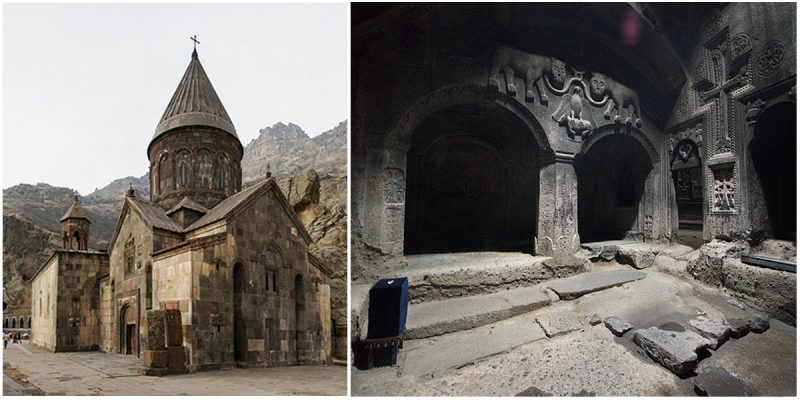Geghard is a medieval monastery in the Kotayk province of Armenia, partly carved out of a mountain.
Though the monastery has been around since before the 4th century, the main cathedral was built in 1215. It contains a number of churches and tombs which illustrate the very peak of Armenian medieval architecture.
The complex of medieval buildings is set against a landscape of great natural beauty, at the entrance to the Azat Valley.
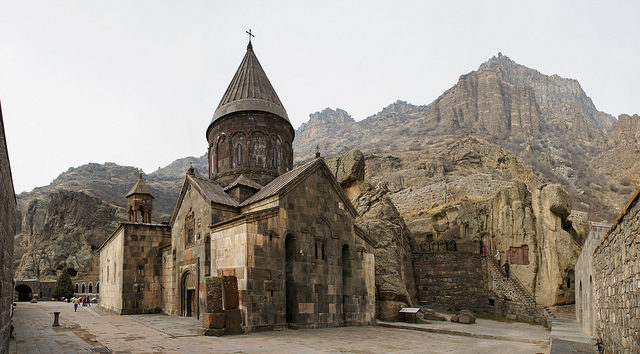
According to tradition, the monastery was founded by St. Gregory the Illuminator.
The site where St. Gregory chose to build the monastery was a spring arising in a cave that was regarded as sacred prior to the arrival of Christianity.
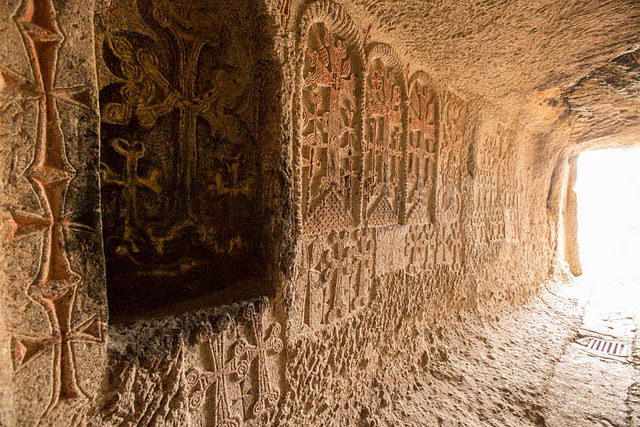
According to the Gospel of John, Jesus was stabbed in his side by a lance whilst hanging from the cross.
It is believed that this monastery possesses the spear that stabbed Jesus. From this belief comes its present name, Geghard-avank – “The Monastery of the Spear”.
This made it a popular place of pilgrimage for Armenian Christians over many centuries.
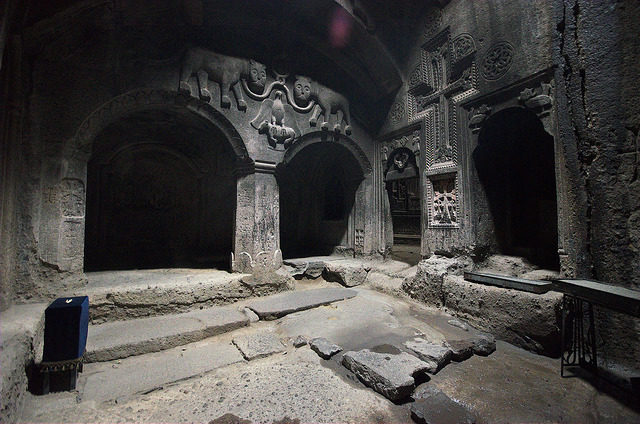
The monastery was destroyed in the 9th century AD by the invading Arabs, and then re-established at the end of Muslim rule in Armenia.
The most ancient part of the monastery is the chapel of St. George and it is located to the east of and outside of the main monastery complex.
It is partly hewn in massive, solid rock and its composition was largely influenced by the shape of the cave which existed there.
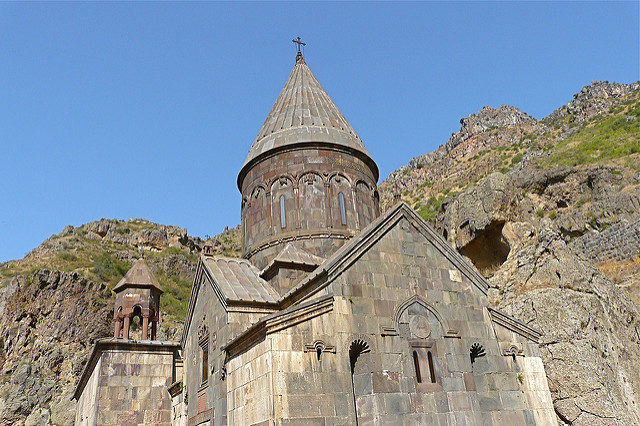
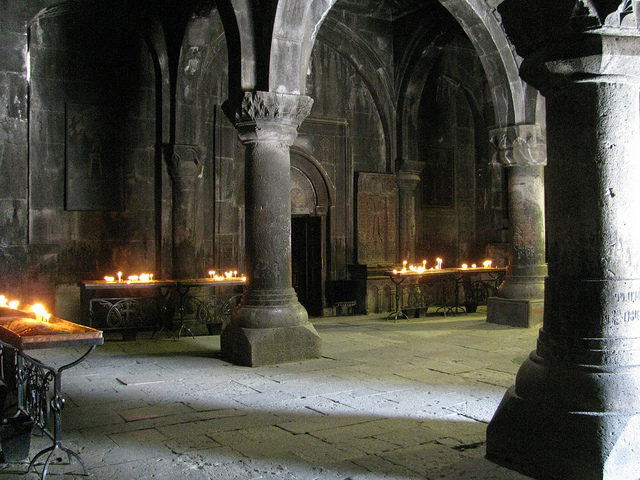
Another unique place in the complex is the vestry, gavit.
It is a rick-attached vestry west of the main temple built between 1215 and 1225, linked to the main church.
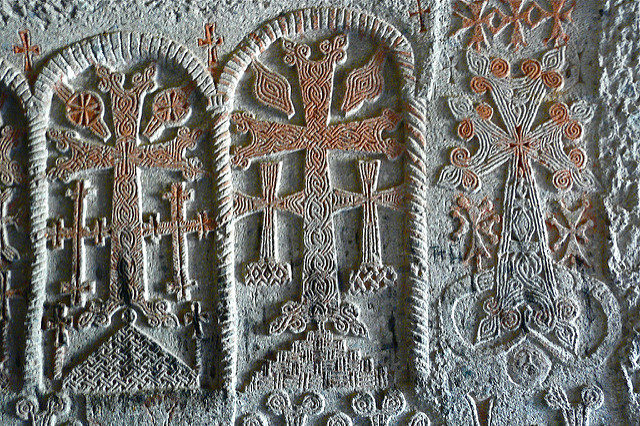
There are four massive free-standing columns in the center that support a roof of stone with a hole in the center to admit light.
The gavit was used for teachings and meetings, and for receiving pilgrims and visitors.
